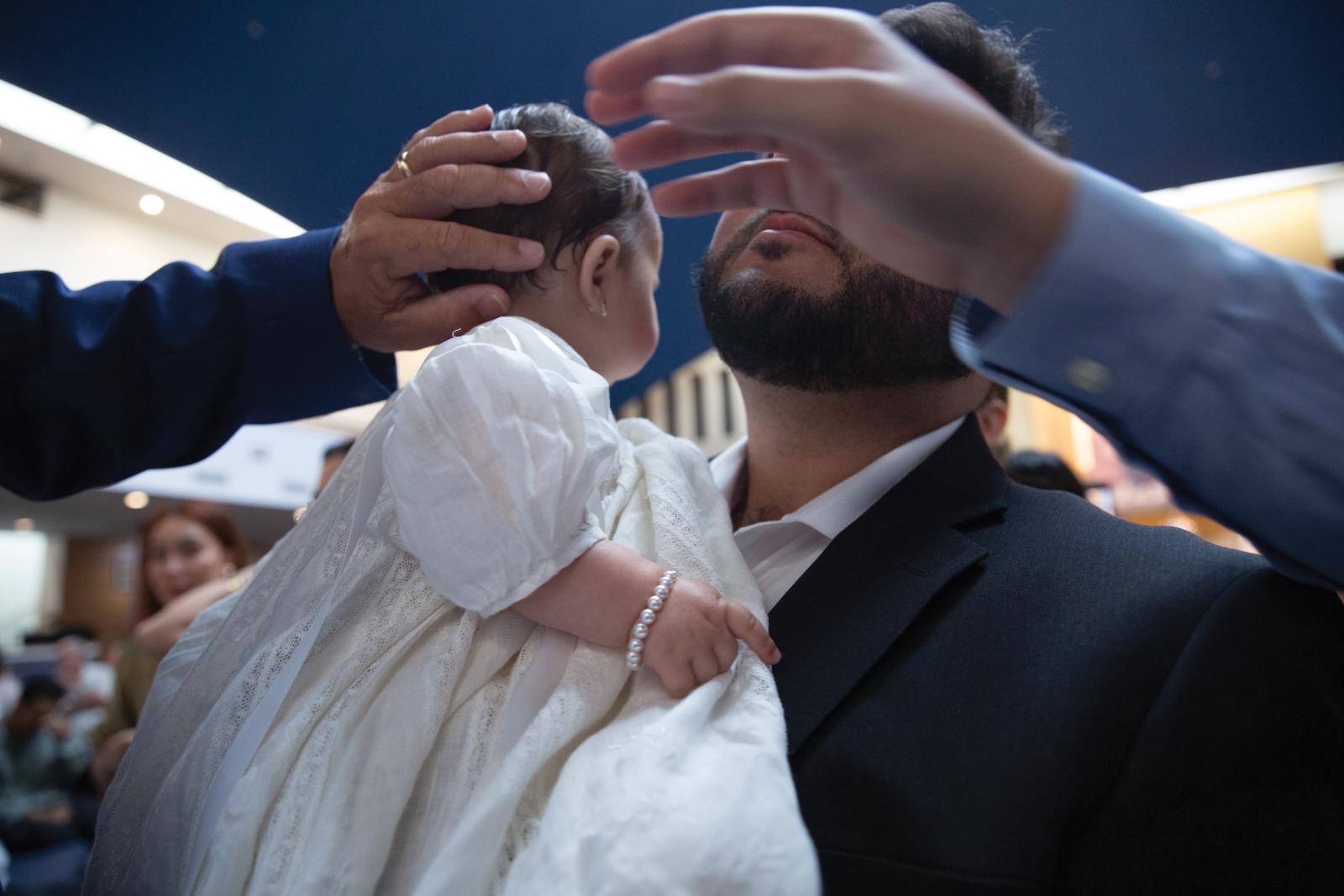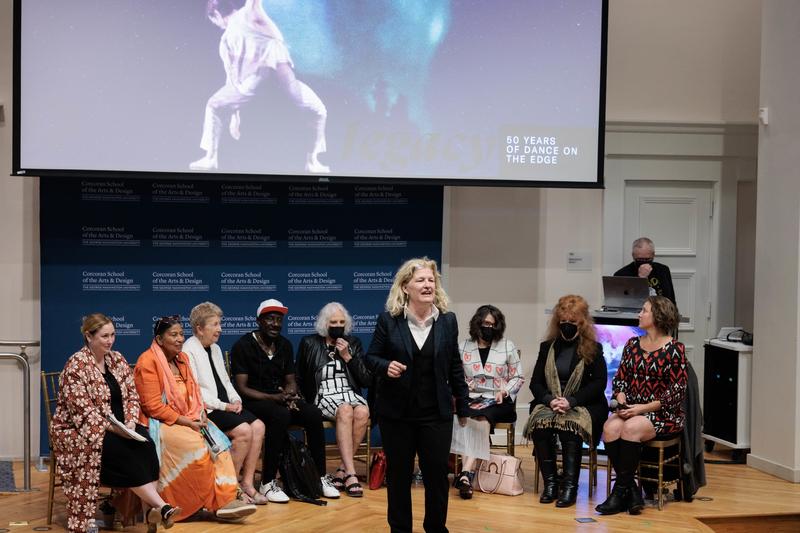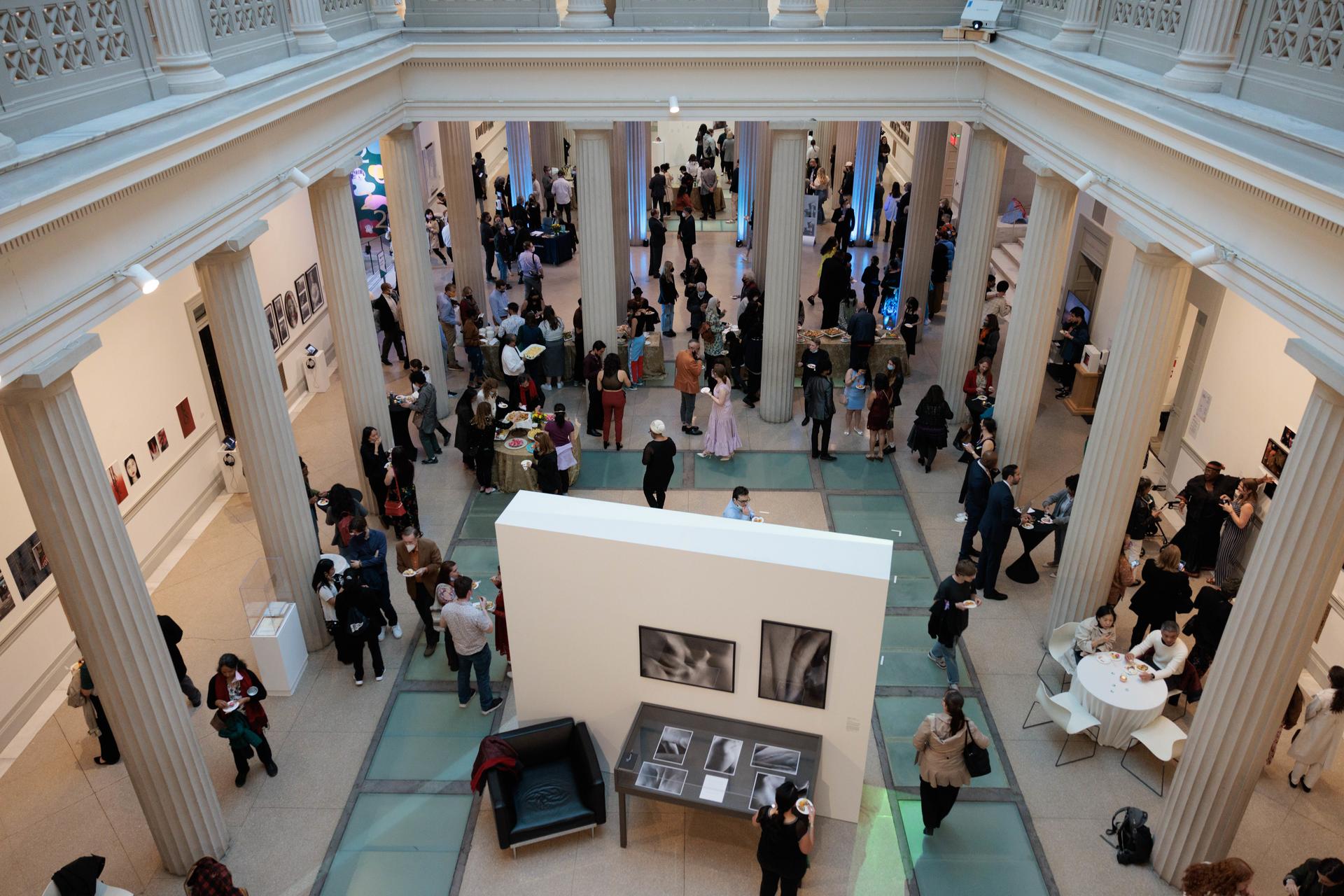For everyone, perhaps especially for those who love the arts, the final weeks of the spring semester are a beautiful time of year in Foggy Bottom. The weather tends to be glorious, buds and flowers are popping, and excitement surrounding Commencement and summer adventures contribute to the warm glow many are feeling. But for arts lovers at the George Washington University, the annual NEXT Festival at the Corcoran School of the Arts and Design puts whipped cream and cherries on top of the season’s desserts.
The yearly celebration staged by the Corcoran School, a part of GW’s Columbian College of Arts and Sciences, gets underway this week and continues through May 16, with 47 exhibits, 22 live performances and four panels and research-based presentations. More than 80 students combine their time and talents to create a memorable festival, highlighted by a party dubbed—what else?—the Extravaganza, that easily qualifies as one of the year’s most gala events.
The Extravaganza, in the Corcoran’s Flagg Building, will be held on Thursday, April 25, from 6:30–9 p.m. and is free to guests, who are asked to register online in advance. They will see graduating students’ art on exhibition in the Flagg Building, as well as interactive design work and many dance, theater and music performances. Light food and refreshments will be available. The Corcoran School’s director, Lauren Onkey, said it’s one of her favorite events of the year.
“It’s really one of the most beautiful nights of the year,” Onkey said, “for us and for GW, because people get to see the students’ work and the students get to see others responding to and experiencing their work. We’ve got alumni that come and parents, family and friends are there. It’s a wonderful night.”
The festival kicks off on at 6:30 p.m. April 17 with the Corcoran School’s annual Dudley Memorial Lecture, to be given this year by John Troutman, curator of music and musical instruments at the Smithsonian Institution’s National Museum of American History and chair of its division of culture and the arts. His lecture, “Hellhounds and Salty Dogs: Building Restorative Blues History at the Smithsonian,” will be presented free of charge to registered guests in the Flagg Building’s Hammer Auditorium and will be followed by a reception. Onkey said the event promises to spark rich discussion.
“How do we tell the story of the blues? Who gets to tell it? The very fraught history of white blues scholars who historically would sometimes claim ownership of the story and control access to those artists and go out and record them is a fascinating history,” Onkey said. “John can speak as a musician himself, as a scholar of the blues and as somebody who is thinking very carefully about how we present the arts in the world at the Smithsonian. So his lecture will really touch on all the various things that we do here at the Corcoran.”
Corcoran School students in museum studies and exhibition design have collaborated with graphic design students this year to produce an exhibit focused on the history of the movement for D.C. statehood. Apart from the inherent interest of the subject matter, Onkey said, she is excited by the way both graduate and undergraduate students have worked across programs to think about how an exhibit is put together.
“That’s the kind of collaboration that I think is really exciting,” Onkey said, “when we can get the students to work in sync across disciplines, because they ask different questions depending on where they are seated.”
Another exhibition curated by art history and museum studies students, “Art After Duchamp,” is open at Gallery 102. It features work by 17 artists created in the spirit of Marcel Duchamp, the great Dada provocateur. The works were selected by Lisa Lipinski, associate professor of art history in the Corcoran School. Her students were given hands-on experience in deciding everything from where and how the works she selected would be displayed to what kind of type should be used on posters for the exhibit.
An additional highlight will be the Spring Dance Concert presented over three evenings from April 18-22 in the Dorothy Betts Marvin Theatre. Students will perform their own choreography as well as dances created by faculty and guest choreographers.
There will be several theatrical performances, including an installation in the Flagg Building of elements from last fall’s production of “The Laramie Project.” Excerpts will be performed at the Extravaganza.
Themes that guests will encounter this year include sustainability, social justice and climate change. There will be nuanced stories of queer identity and consideration of storytelling as a whole. Future technology and AI will play a role, along with established crafts such as ceramics, quilting and woodwork. In short, Onkey said, there will be something for everyone.
“Because of the breadth of our programs here in the Corcoran School, we have students who are makers and performers, and also students who are researchers and scholars,” Onkey said. “For NEXT this year, we’ve really tried to find ways to feature researchers, scholars and emerging museum studies professionals as well. NEXT showcases the arts as a kind of giant tableau at GW.”
A complete schedule of events is available in the NEXT festival guide. The NEXT exhibition is open to the public in the Flagg Building at 500 17th Street NW through May 16, Wednesday through Sunday from 1–5 p.m. The exhibition will also remain open to the GW community during graduation weekend, May 17–18, for students' families to enjoy.
GW Today asked a group of students to describe the work they will be presenting at the festival. Their responses are shown below.
Kevin Darmadi, B.A. music
For my capstone project, I will be showcasing cultural music from several of the Celtic nations through a recital on the bagpipes and fiddle. Specifically, the nations I am featuring are Scotland, Ireland, Brittany, Asturias and Galicia. I first picked up the bagpipes when I was 9 years old and was trained through a Scottish perspective, but I have always loved listening to music from the other Celtic nations as well, which inspired the program for my recital. This project has given me the opportunity to explore and learn about unique but interconnected music styles and cultures, and I am excited to share these styles and cultures with everyone through my recital.
Joseph Decilos, B.A. photojournalism
My thesis work, “Espacio Seguro,” is a diaristic exploration of queer Hispanic safe spaces. This work, with its title translated as “Safe Space,” is rooted in queerness and Hispanic identity and speaks to notions of belonging, kinship, and religion and how it manifests in spaces of sacredness for these intersectional populations. My project combines my vision with the leadings of my subjects to add to the tapestry of queer culture that has often been stigmatized and erased for generations. In its essence, Espacio Seguro is an exploration of Hispanic queers and their safe spaces. It is a dive into the relationships and rituals of this populace, the friends made through shared commonalities, and spaces where queer Hispanics are allowed to simply be.
Yara Nassif, M.A. interaction design
Too often overlooked, the dangers pedestrians face on our streets can be heart-stopping, as I’ve experienced near my own home, narrowly avoiding being struck by cars. It's evident that this danger isn’t exclusive to me. That’s why I knew I had to do something about it! That realization is what motivated the creation of RoadSafe Companion.
RoadSafe Companion ensures pedestrian safety with flashing beacons on each crosswalk side. These beacons are highly intelligent - they detect motion and start flashing when a pedestrian steps onto the crosswalk, alerting drivers. Additionally, recognizing that drivers get distracted while driving, I made sure they receive a pop-up notification on their phone, reminding them to watch out for pedestrians like us. The exact location of the crossing pedestrian shows up on their maps. Moreover, in order to simplify installation and management of the beacon, I created a user-friendly app. Authorities can control beacon functionality with ease.
That's RoadSafe Companion: a solution born from necessity, ensuring pedestrian safety in a changing world.
Ngoc Thuy Vy Huynh, M.A. interior architecture
My work for this project defines how I understand and view interior design. To me, interior design is the culture between East and West, the history of interior design, and travel, and it comes from all over the world, including everything around us. My passion for exploration and wanting to learn about the differences between Eastern and Western design cultures is what inspired me to pursue my major. Collage combines Eastern and Western interior styles, and its design history ranges from the Gothic, Renaissance, etc., to modern style. I was using interior details from worldwide—Italy, France, America, Japan, China, Vietnam, Korea, etc.—to express multiculturalism in interior design.
Alexia Papatsa, B.A. dance
For the NEXT Festival and the presentation of my thesis, I wanted to create a choreography that represents my dance career at GW and the things I have explored through my training. My work in the department has revolved around the idea of self, memory, grief and trauma. The nature of the NEXT exhibition and everything it stands for has inspired a great feeling of serenity that I have sought in this final project. The work I will be presenting, titled "333," focuses on how Gen Z shapes ideas of self through the process of trauma and grief. The piece will be performed by 12 dancers in front of a projection that captures our process and around candles that commemorate a long journey of hardship and grace.
Alexandra Rodriguez, M.A. new media photojournalism
My multimedia project explores my Cuban-American identity and how the hyphen bridging both cultures is being diluted with every generation. My grandparents left Cuba after Fidel Castro took power in 1959. For me and my siblings, the hyphen is a bridge that connects us to them and the country that made them who they are. Realistically, the generation to come will have no living ties to Cuba—all they will have are secondhand stories. This reality begs the question—what happens to that hyphen once our living links to Cuba are no longer with us?
Chasity Smith, M.A. new media photojournalism
For my photographic series “The Kids are Alright” and its accompanying documentary “American Dreams,” I spent time across the southeastern United States listening to and documenting the experiences, struggles, hopes and fears of people in my generation, Generation Z. Initially, I approached my project with the belief that today’s young people have it way harder than young people of the past. But as I went on, I realized that wasn’t necessarily true. The world is different now, so of course the youth and our experiences now are also different, but I think being a young person in this country has always been hard regardless of the time period. And I think if we actually listen to the voices of young people instead of ridiculing them, then maybe we can course correct for the future instead of asking “How did we get here?” for the millionth time 20 years from now.
Danielle Towers, B.F.A. photojournalism
For my thesis project I have been exploring the historical legacy of the city of Greenbelt, Maryland. The project is about understanding and asking questions about the vision of America that inspired the city’s conception. Greenbelt is one of three federally funded cities created during the Great Depression under Roosevelt’s New Deal Program. These cities were meant to create opportunities and affordable housing for working class Americans, but more importantly they were examples of what suburbia in America could be.
The cities were eventually sold to private developers in 1952. But Greenbelt is unique because the residents bought all the original homes and made their own housing Co-op. So, today, in the middle of a modern-day suburb is this time capsule where people are still living in the same houses and block structures from the 1930s. What are the implications of community design on the way we live? What does design say about our values? How is that reflected through the lives of the people who live in Greenbelt? What did Greenbelt’s designers get right? What did they get wrong? We need to be thinking about what types of communities we want to hope for, to dream for.
Xitong (“Rocky”) Yuan, B.F.A. graphic design
My project is “Living Spatial Shanshui Through Generative Computational Design.” Shanshui refers to a traditional Chinese art style that uses brush and ink to create paintings of natural landscapes featuring mountains and water. Created with computational GPU particles, this artwork explores the collaboration between the artist and artificial intelligence (AI). Through cognitive electroencephalogram (EEG) and AI algorithm control, this artwork transforms static landscapes into a self-generated spatial experience that captures ephemeral landscape moments that can never be replicated. This collaboration between the artist and AI aims to explore how an artwork can reach its own subconscious while offering new cartographic aesthetics to Shanshui and its relationship with people. (See image at top of story.)













